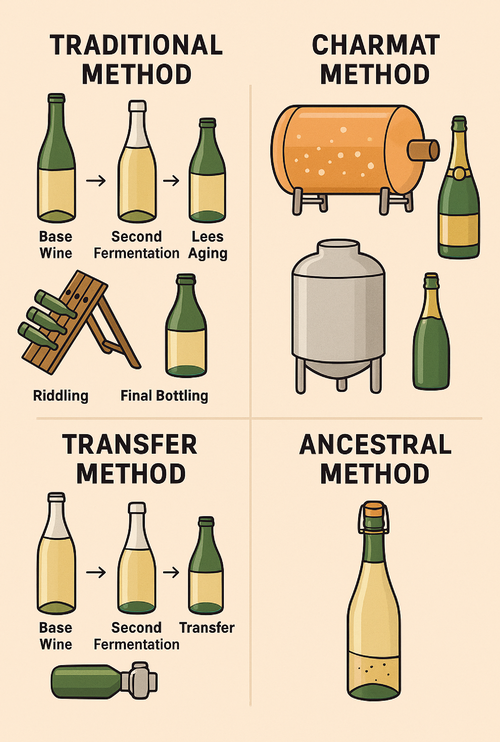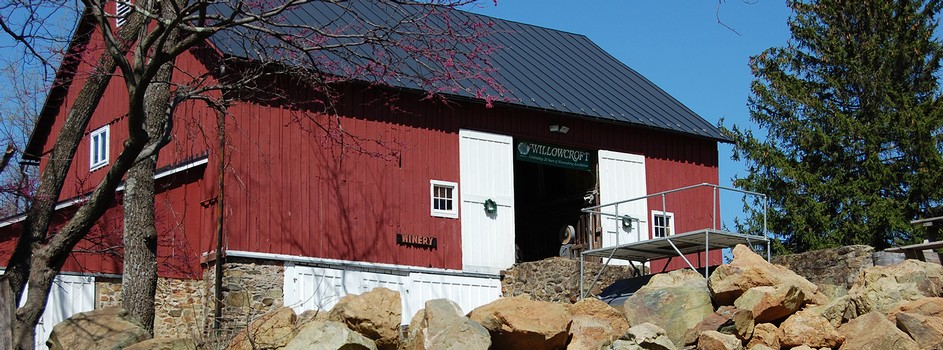How Is Champagne Made? A Guide to Sparkling Wine Production Methods

Sparkling wine is known for its festive bubbles, but not all fizz is created the same way. Champagne—arguably the world’s most iconic sparkling wine—is crafted using a time-intensive technique called the Traditional Method, or Méthode Champenoise. This process gives Champagne its signature fine bubbles, rich mouthfeel, and toasty, yeasty complexity.
But it’s not the only method. Let’s explore how sparkling wines are made, starting with the classic and moving through alternative worldwide techniques.
This is the most meticulous and respected method of making sparkling wine, used for Champagne, Crémant, Cava, and other premium wines.
- Step 1: Base Wine Production
Winemakers begin by creating a still (non-sparkling) wine from grapes, usually dry and high in acidity. These base wines are often blended from different vineyards, grape varieties, or vintages. - Step 2: Second Fermentation in Bottle
A mixture of sugar and yeast, called the liqueur de tirage, is added to the base wine, which is then sealed in individual bottles. This triggers a second fermentation, which produces carbon dioxide—the source of the bubbles. - Step 3: Lees Aging (Yeast Autolysis)
As the yeast cells finish fermenting the sugar, they die and settle inside the bottle, creating a layer of sediment known as lees. Wines are often aged on these lees for months or even years to develop richer textures and flavors like brioche, toast, and hazelnut. - Step 4: Riddling (Remuage)
Bottles are slowly tilted and rotated, traditionally by hand, to move the sediment down into the neck of the bottle. - Step 5: Disgorgement
The neck of the bottle is frozen, and the plug of frozen lees is ejected. The wine is topped up with a mixture of wine and sometimes sugar (called the dosage) to balance flavor before final sealing. - Step 6: Final Bottling and Labeling
The finished wine is corked, wired, labeled, and ready for enjoyment!
Not all sparkling wines are made using the traditional method. Here are a few other approaches:
- Charmat Method (Tank Method)
This method, used for Prosecco and many fresh, fruit-driven sparkling wines, carries out the second fermentation in a large, pressurized stainless steel tank rather than in individual bottles. It’s faster and less expensive, but it creates larger, less persistent bubbles and minimal yeast character. - Transfer Method
A hybrid of the traditional method, this approach starts with bottle fermentation, but the wine is then transferred to a tank, filtered, and rebottled. It’s more efficient and avoids riddling while retaining some lees influence. - Ancestral Method (Pét-Nat)
Short for Pétillant Naturel, this ancient method allows the wine to finish its fermentation in the bottle without added yeast or sugar. The result is a lightly sparkling, often cloudy wine that can be funky, unpredictable, charming, and fresh. - Continuous Method
This method, used less commonly today, involves continuous fermentation across several connected tanks, creating a steady stream of sparkling wine.
The method used to produce a sparkling wine significantly impacts the final experience in your glass. While the Traditional Method creates wines with finer bubbles and more complex flavors, other methods can produce fun, fresh wines perfect for casual sipping.
Whether you're popping Champagne for a celebration or toasting with a bright glass of Prosecco on the patio, knowing how your bubbles are made can deepen your appreciation—and guide you to styles you’ll love.

